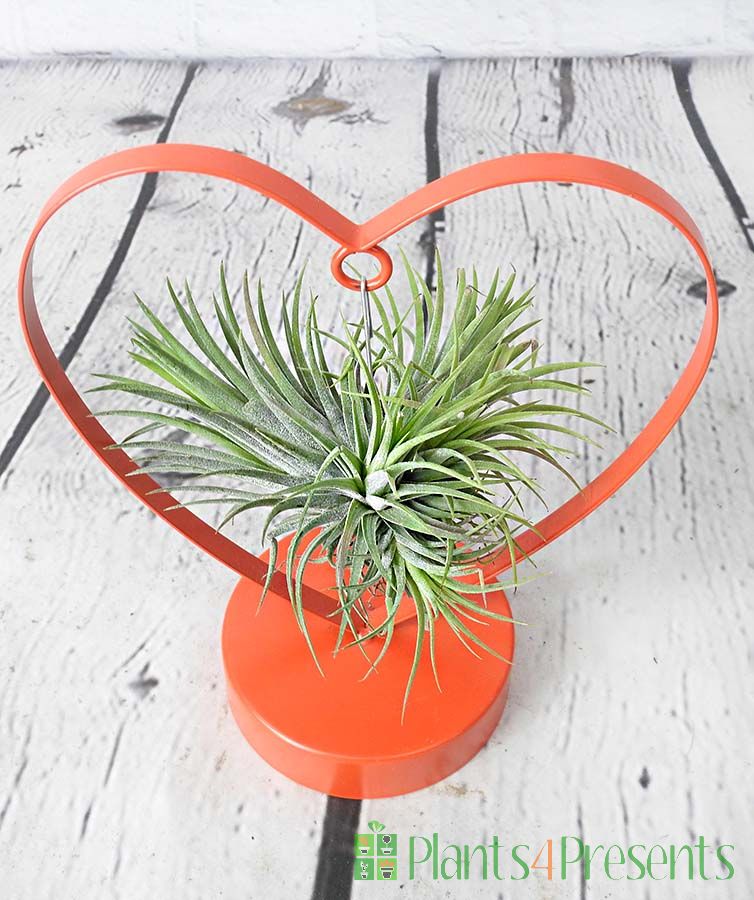Hanging Heart Tillandsia
Out of stock
Sorry we don't have any Tillandsia available at the moment, but we do have lots of other lovely house plants available for next day delivery.
A fun and unusual gift for your loved one, these tillandsia are displayed in a cute metal love heart. Tillandsia are actually airplants so they thrive best on very limited watering. In fact, the less water they receive the happier they will be, making them a fantastic, long-lasting gift that is easy to care for.

These instructions are sent with the plant gift
Tillandsia are part of the bromeliad family and come from South America. They make great houseplants loving warm temperatures up to 30ºC and are very easy to look after.
Tillandsia thrive where there is a superior airflow, and so it is important to provide a well-ventilated position for your plant to remain healthy. They also enjoy bright but diffused light, so a bright room with lots of skylights would be ideal, or simply keep it a few feet away from the window that doesn't face south.
In the wild, Tillandsia (like orchids) absorb water through their aerial roots so it is very important not to over water them. From spring until autumn, simply mist the leaves a couple of times a week and they will absorb the water this way. A spot in a bathroom, is perfect.
During the winter your plant will only need misting very occasionally, Avoid watering it altogether if temperatures drop to 12ºC as they can remain wet for too long at low temperatures.
Once Tillandsia have reached maturity and flowered, they will die, but not before producing young plants. The mother plant once it has died completely, can be removed, leaving the offsets to grow on.






